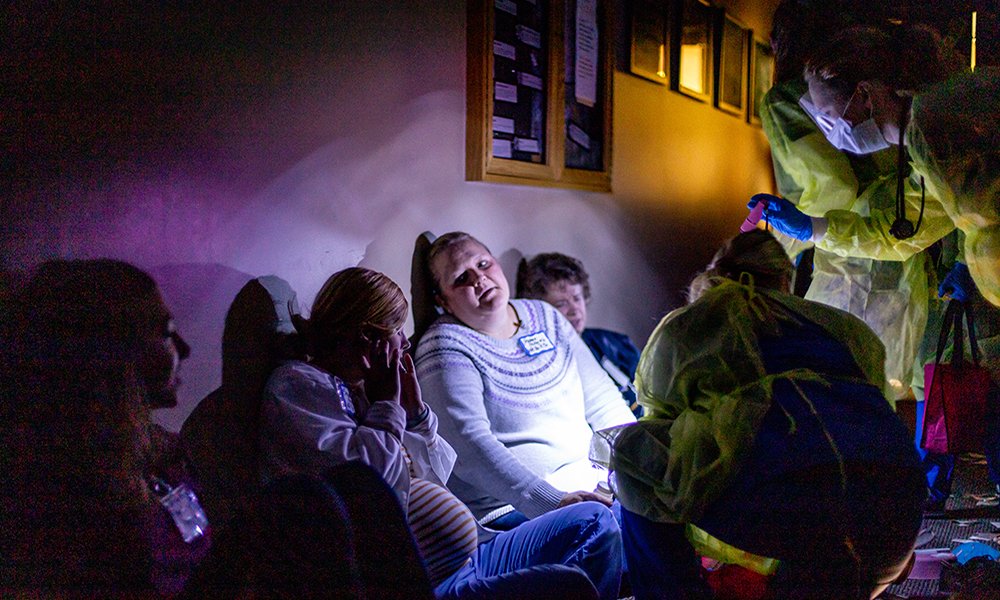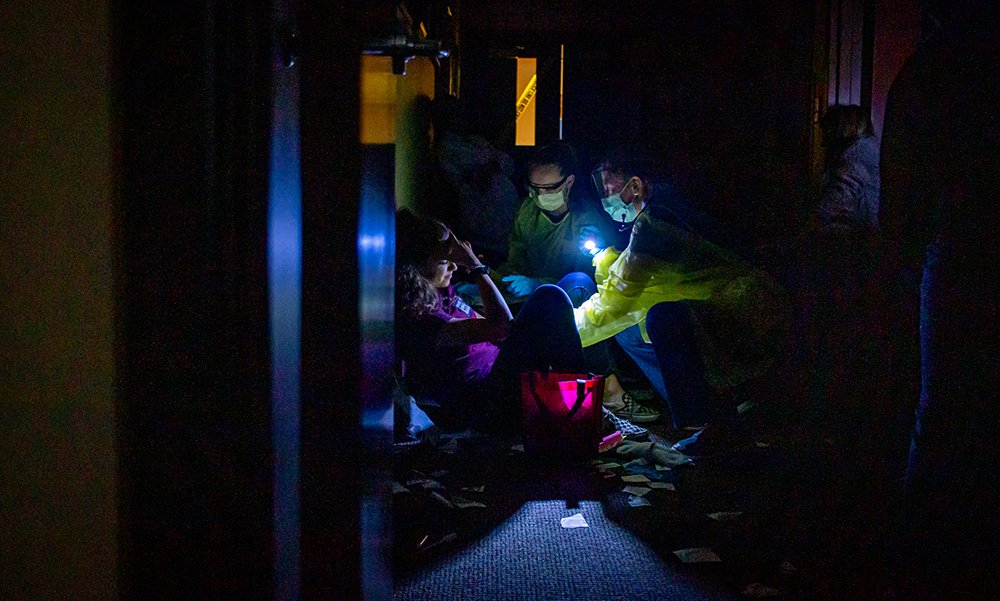
When disaster strikes, nurses are expected to respond. If you’re currently pursuing a career as a nurse or considering becoming one, do you feel adequately prepared to respond?
All nurses, regardless of their position or tenure, are expected to assist with disaster response when one arises in their geographic location. To keep nurses sharp and on top of response protocol, most health care agencies practice disaster training on a regular basis. Here at Concordia, we provide similar training to current nursing students to start preparing them before they ever even enter the workforce.
Our on-campus simulations are offered twice a year and are required course activity for both accelerated BSN students and traditional undergraduate nursing students currently in the population/community health course. Each simulation gives nursing students the chance to experience a disaster site, determine how best to respond, and practice care alongside their peers.
“I think the most important knowledge to have when going into a disaster situation is the basics of first aid, excellent communication skills, infection control, and being an advocate for the patients you are caring for,” said Kathi Lengyel, nursing simulation lab coordinator.
 Several objectives guide the simulations and ensure each participant achieves the expected outcomes. They include:
Several objectives guide the simulations and ensure each participant achieves the expected outcomes. They include:
- Identify, assess and treat as able the victims of the disaster per the SALT Triage Algorithm which is used by response teams in disasters large and small.
- Identify and label victims of the disaster per the Triage Color Tag and move to a safe area if able. Triage color tags include black (dead or death is imminent), red (top priority/life-threatening injuries but can be stabilized without undue resource utilization/high probability of survival), yellow (priority/ injuries with systemic complication not life-threatening; can withstand wait of 45-60 minutes—condition could deteriorate with significant delay), and green (local injuries without immediate systemic complications that can wait several hours without risk of deterioration).
- Provide a full report of the disaster victims to the Operations Section Chief.
- Discuss the disaster management cycle and the role of nursing following completion of the simulation.
The key takeaway for each participant in the activity is that a disaster similar to the simulation could happen anywhere and at anytime. Exposure to these types of simulations helps nursing students practice their responses and develop muscle memory to assist in a situation such as this one.
Although the students who participated in the simulation will receive training like this in the workplace once they graduate and step into a professional role, we think it’s never too early to start preparing. If you’re a current student or someone who is considering nursing school, make sure the program you choose provides extra training opportunities like this.
To learn more about Concordia’s School of Nursing, explore our programs page.
—
If this story has inspired you, why not explore how you can help further Concordia's mission through giving.